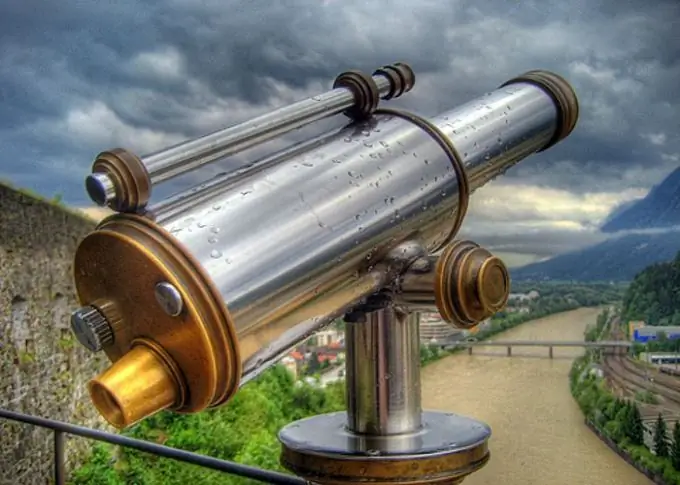- Author Nora Macey [email protected].
- Public 2023-12-16 10:17.
- Last modified 2025-01-23 08:48.
From the Greek language, the word "telescope" is translated as "to see far away." What, in fact, is its main task - to show the observer the object he is looking at as clearly and in detail as possible.

Instructions
Step 1
The telescope is indispensable for one of the most interesting and entertaining hobbies - astronomy, because here planets, star clusters, the Milky Way and galaxies open up to the observer's eyes. But with the help of this device it is possible to study not only space objects, but also the natural world around us, no less diverse and mysterious.
Step 2
In order to better understand what a telescope is, let's talk about its technical characteristics and start with the main thing - the ability to magnify an object. It can be determined using a simple arithmetic operation: just find the quotient between the focal length of the lens and the focal length of the eyepiece. Next is the exit pupil.
Step 3
As you know, the eyepiece builds an image of different sizes, and at the same time it should not exceed the size of the human pupil, otherwise some part of the "pattern" will go beyond the established limits and, accordingly, the efficiency of the telescope will decrease. But one of its purposes is to bring closer and in all details to show the observer something distant and inaccessible to the human eye. The diameter of our pupil is no more than 5-8 mm, and with the help of the telescope lens, it seems to increase and see previously inaccessible.
Step 4
The next is the resolution of this optical device. As a rule, it is limited by the size of the diffraction disk (the telescope “depicts” a point star in the form of a disk with rings, which are called diffraction rings) and everything that is hidden by it cannot be seen. The size indicated can be calculated by a simple ratio: 14 / lens diameter. Now about the relative aperture (this is the name of the ratio of the lens diameter to its focal length). It characterizes the ability of the telescope to transmit the brightness of the image (luminosity). To make it sufficient for shooting not bright objects, for example, a nebula, the relative aperture of the lens should be 1: 2 - 1: 6.
Step 5
The most popular among "space" researchers are mirrored optical devices, and it is with them that practically all large observatories are equipped. At present, the diameter of the composite mirror of the largest telescope built on Earth reaches eleven, and the monolithic mirror is eight meters.






